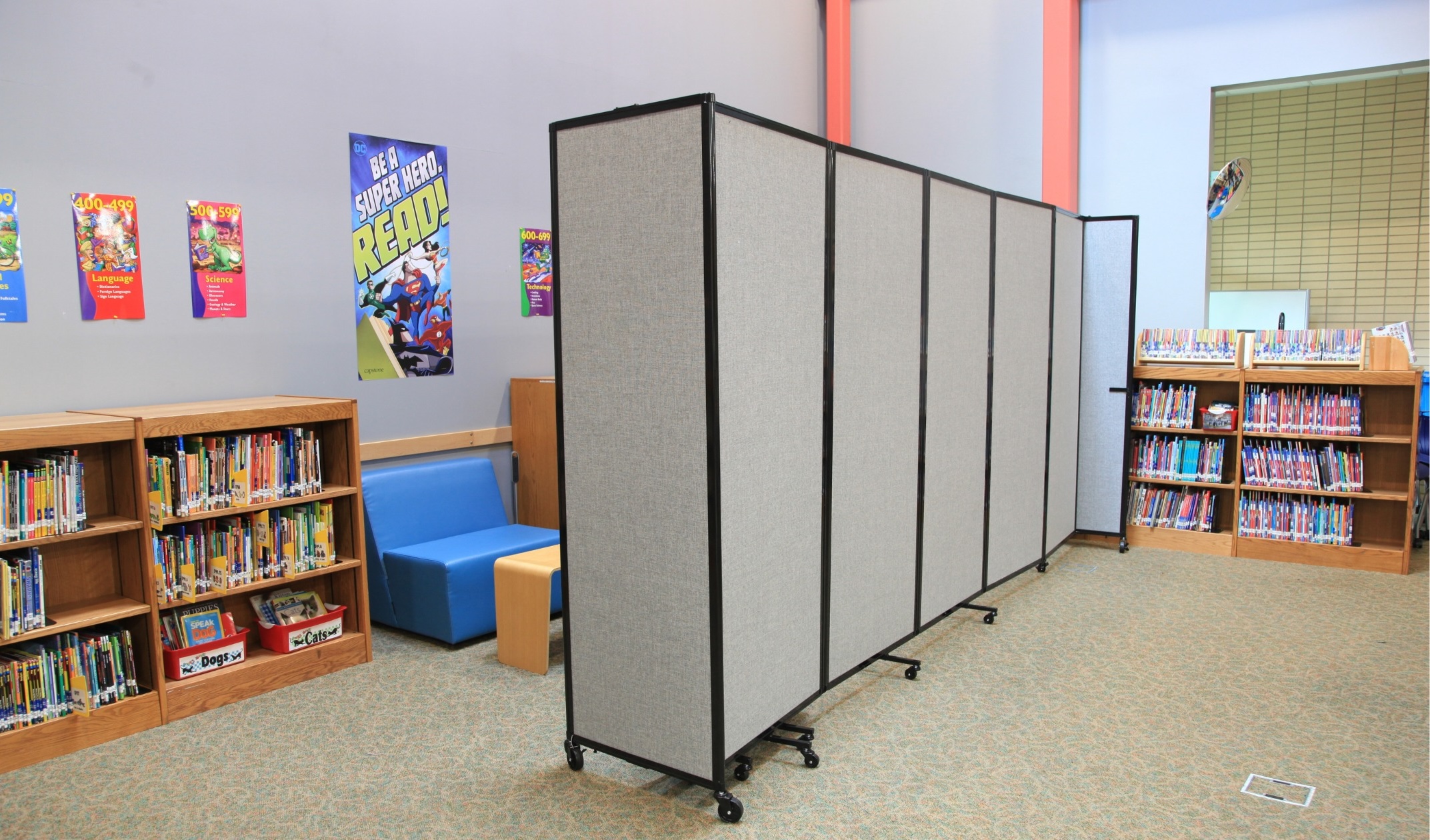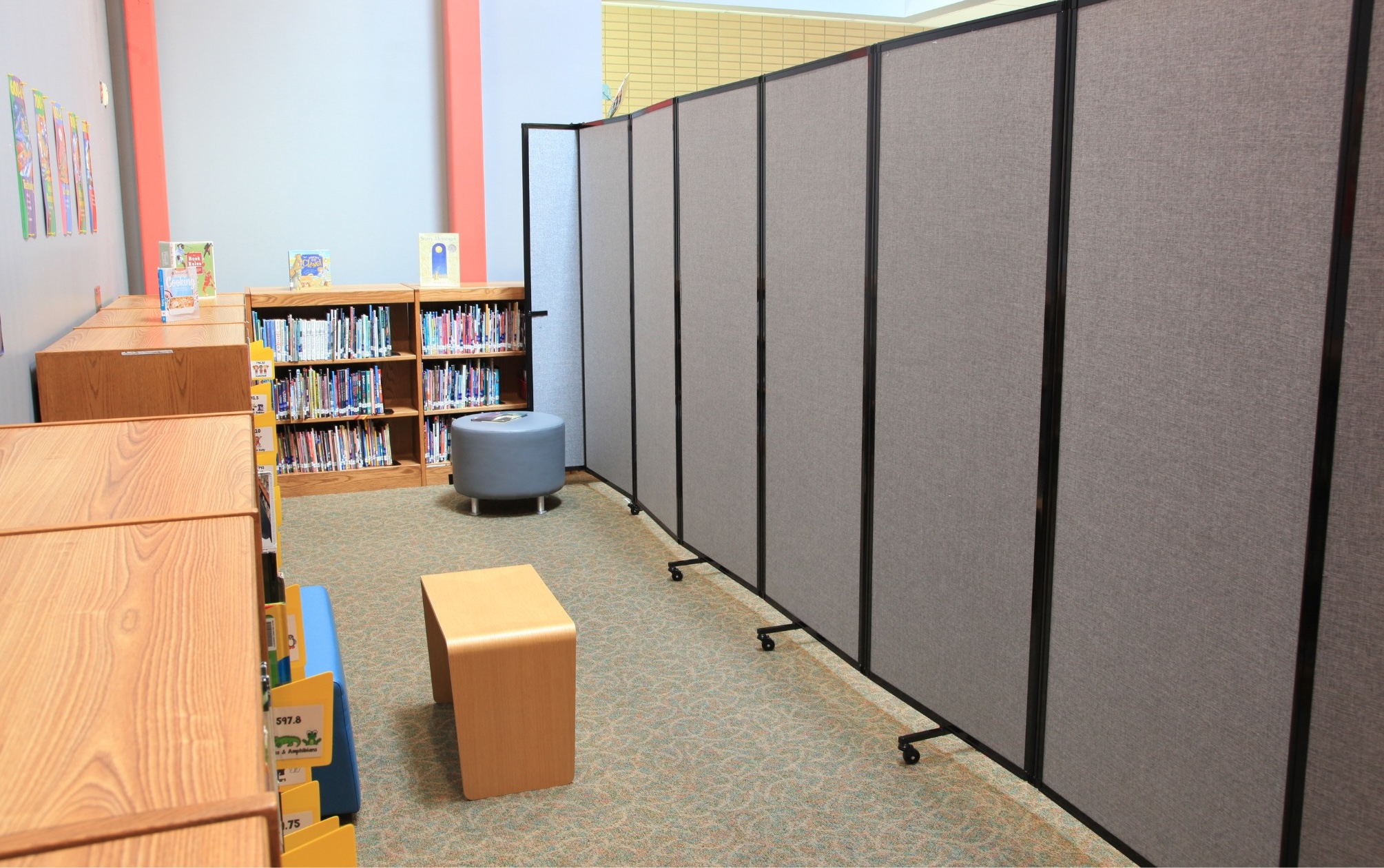Creating Effective Special Education Learning Spaces with Room Dividers
Posted by Kate Murphy on Aug 27th 2024

For millions of neurodivergent and special needs students across the United States, the traditional classroom can be a sensory minefield. Excessive noise, visual distractions, and a lack of personal space can significantly hinder their ability to learn and thrive. As an educator, you have a responsibility to create inclusive environments that cater to the unique needs of all students. A powerful tool to do so is a room divider.
The Impact of Classroom Environment on Special Needs Students
Environmental factors, like the abovementioned visual and auditory distractions and lack of personal space, can exacerbate sensory processing issues, leading to:
- Difficulty concentrating: Loud noises and visual clutter can make it challenging for students to focus on their tasks.
- Increased anxiety: Sensory overload can cause anxiety and stress, impacting learning and behavior.
- Social challenges: A lack of personal space can make it difficult for students to interact with peers and build social skills.
- Academic difficulties: When students are overwhelmed by their environment, it's harder for them to absorb and process information.
Our Room Divider 360® can be effortlessly configured into C-shape, L-shape, or straight-line formations to match the day's activities. The StraightWall™ and QuickWall® options offer another versatile option, expanding or contracting as needed. These adaptable tools empower educators to create dynamic and responsive learning environments.
Just imagine a special education classroom layout where distinct learning zones coexist harmoniously. A quiet zone provides a sanctuary for focused work, reading, or sensory breaks. A collaborative space encourages group projects and peer interaction. A dedicated teacher's zone facilitates planning, assessment, and one-on-one instruction. And a sensory exploration zone sparks creativity and tactile learning. Clear visual cues, easily implemented with our room dividers' tackable surface, delineate these zones, enhancing student orientation and independence.

Creating a Sensory-Friendly Learning and Special Education Classroom Space
Beyond creating physical divisions, room dividers play a crucial role in managing sensory input. By reducing noise levels and visual clutter, they contribute to a calmer, less overwhelming atmosphere. Our Room Divider 360 and Hush Screen™ Portable Partition, both with a honeycomb cardboard core, create a tranquil haven for students who require auditory respite. Additionally, our wall-mounted SoundSorb™ panels further absorb echoes and reverberations, improving speech intelligibility and reducing anxiety.
It's essential to consider classroom layout when implementing room dividers. Large, open spaces can be disruptive, while excessive partitions can create obstacles. The key is to strike a balance, creating defined areas for different activities while maintaining a sense of openness. By carefully considering the specific needs of your students, you can optimize your classroom layout to foster focus, reduce sensory overload, and promote academic success.
Creating a visually appealing and calming classroom is equally important. Avoid excessive bright colors and unnecessary clutter. Focus on essential learning materials and store extraneous items out of sight. Shelves also work as room dividers — think of them as mini movable walls that also happen to hold classroom supplies. A minimalist approach can significantly reduce sensory overload and improve concentration.
Design the Ideal Special Education Space
The addition of high-quality room dividers is an investment in your students' future. By creating inclusive and supportive learning environments, we empower neurodivergent and special needs students to reach their full potential. Explore our range of room dividers and discover how your educational space can benefit from modular solutions, transforming your classroom into a sensory, special education haven.

